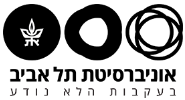EE Seminar: Co-occurrence for Texture Representation and Applications
Speaker: Roy Jevnisek
Ph.D. student under the supervision of Prof. Shai Avidan
Sunday, January 7th, 2018 at 15:00
Room 011, Kitot Building, Faculty of Engineering
Co-occurrence for Texture Representation and Applications
Abstract
Imagine a texture-less world, where images are made of large chunks of piecewise constant colors, how boring! Texture gives life and meaning to images. Without it, how could one tell a Zebra from a horse?! This talk focuses on textures in images. More specifically it presents co-occurrence statistics as a way of representing textures. We demonstrate the power of this representation through two applications: boundary aware filters and template matching
In boundary aware filters the goal is to smooth an image but keep the boundaries between objects sharp. To do that we present the Co-occurrence Filter (CoF). CoF generalizes the Bilateral filter, instead of using a Gaussian on the range values to preserve edges it relies on a co-occurrence matrix. Pixel values that co-occur frequently in the image (i.e., inside textured regions) will have a high weight in the co-occurrence matrix. This, in turn, means that such pixel pairs will be averaged and hence smoothed, regardless of their intensity differences. On the other hand, pixel values that rarely co-occur (i.e., across texture boundaries) will have a low weight in the co-occurrence matrix. As a result, they will not be averaged and the boundary between them will be preserved.
In template matching we are given a template T and a query image I, the goal is to find the best region R ⊆ I that matches T. We propose a new error measure for matching pixels that is based on co-occurrence statistics. More specifically, the error incurred by matching a pair of pixels is inverse proportional to the probability that their values co-occur together, and not their color difference. This measure also works with features other than color, e.g. deep features. We show that this improves the state-of-the-art performance of template matching on standard benchmarks.

